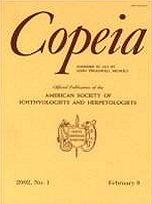Information about sexual dimorphism is essential for understanding the ecology, behavior, and life history of a species, as well as for making morphological comparisons between populations. Furthermore, in order to understand the evolution of sexual dimorphism, it is important to know whether sexual dimorphism is genetically determined or the result of phenotypic plasticity. To this end, we have characterized patterns of sexual dimorphism in the threespine stickleback (Gasterosteus aculeatus). These fish are widely distributed throughout the temperate Northern Hemisphere, and their behavior, ecology, and evolution have been extensively characterized. We first examined sexual dimorphism in morphometric and meristic characters of wild-caught threespine sticklebacks from multiple populations that demonstrate different life history strategies in order to understand general patterns of sexual dimorphism in the threespine stickleback. Next, we made several crosses by in vitro fertilization and raised them in the laboratory to investigate developmental and genetic contributions to sexual dimorphism. Morphological analysis of wild-caught breeding males and females from four North American and six Asian populations revealed that adult males have larger heads and mouths than adult females in all populations. In contrast, adult females were longer in standard length and had longer pelvic girdles than adult males in many populations. Sexual dimorphism in dorsal-spine length was variable among populations. Except for body size, sexual dimorphism in most external morphological traits was similar between wild-caught and lab-reared fish. However, sexual dimorphism was only observed after the fish became reproductively mature. These results suggest that general features of secondary sexual characters are shared across different threespine stickleback populations and that sexual dimorphism in some morphological traits may have a genetic basis.
How to translate text using browser tools
1 May 2007
Sexual Dimorphism in the External Morphology of the Threespine Stickleback (Gasterosteus Aculeatus)
Jun Kitano,
Seiichi Mori,
Catherine L. Peichel
ACCESS THE FULL ARTICLE





